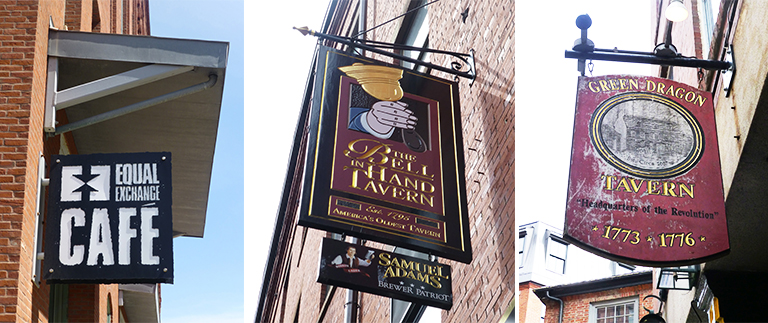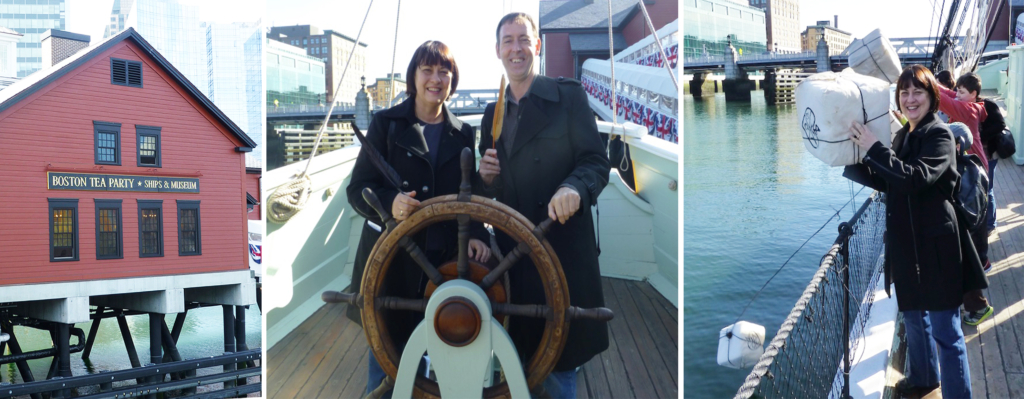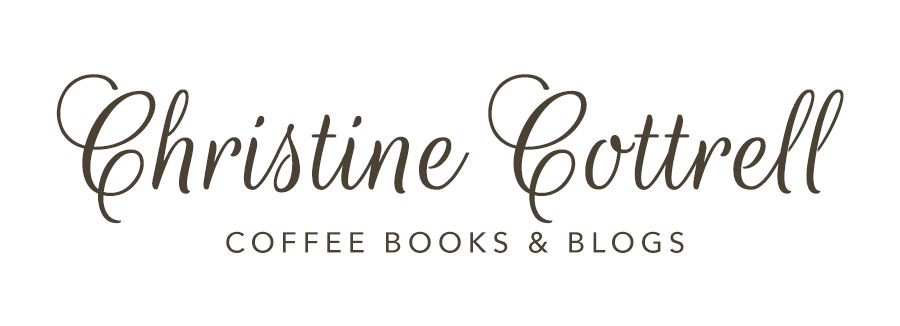In Boston for the 2013 SCAA Expo, we caught up with our friend Summer Lewis, a local of Boston for some years. With Summer as our guide, we set out along The Freedom Trail visiting locations in America’s fight for independence from the English and freedom from slavery – and the part coffee played in each.
Early cafes of Boston
The very earliest record of coffee in Boston is a licence issued to Dorothy Jones in 1670 ‘to keepe a house of publique entertainment for selling coffee and chocholatto’. At this time, before there were coffee houses as such, taverns and inns were the places you went for a coffee in early American cities.
By the late 17th century the term ‘coffee house’ came into use. Among the first in Boston were the London Coffee House (1689), the Sun (1690), Gutteridge Coffee House (1691), the Kings Head (1691) the Indian Queen (1673), the Crown Coffee House (1711), the Royal Exchange (some time before 1711), the Bunch of Grapes (1712) and the North End Coffee House (1740).
The largest and most elaborate of them all was the Exchange Coffee House opened in 1808. Standing seven stories high it was made of brick, stone and marble and took three years to build. Based on Lloyds Coffee House in London, it was where mariners met with shipping and insurance brokers, to find out about arrivals and departures and a myriad of other marine matters. Meetings happened on the first floor where coffee was served, the second had elaborate dining rooms and the rest had 200 rooms to rent where mariners slept when away from home. When a fire razed it to the ground in 1818, it was replaced by a less elaborate place that bore no resemblance to its impressive predecessor.
These no longer exist but three with a significant coffee history we visited are Equal Exchange Cafe, the Bell in Hand Tavern and the Green Dragon Tavern.

We met up at Equal Exchange where Summer had worked. With fair trade coffee and chocolate in hand, we talked about what it was like working in such a pioneering place; Summer’s enthusiasm for all-things fair and honest shining through.

Established in 1986, Equal Exchange is the oldest Fair Trade coffee company in the United States. The original cafe is at 226 Causeway Street. Founders, Rink Dickinson, Jonathan Rosenthal and Michael Rozyne were managers at a food co-operative who had a vision of finding a way to make life fairer for farming communities. The outcome was direct trade that cut out the middleman. Only after long legal battles, did it become the well-respected model for trading coffee it is today.
Next stop was the Bell in Hand Tavern (45 Union Street) – Boston’s oldest continually operating tavern, dating from 1795. We learnt that it was named by its first owner Jimmy Wilson, the ‘town crier’ who announced his arrival to deliver news by ringing a bell in his hand. It’s safe to say that some of Boston’s earliest coffee was served at the Bell in Hand. With signs out the front advertising awards for the best tavern in town, we enjoyed a warming meal and a pot of good ale.

The original Green Dragon Tavern, that was in Union Street, dates from the mid 17th century. It was in the basement of this building, that the Boston Tea Party was planned and the American War of Independence is said to have begun, and as such was known as ‘The Headquarters of the Revolution’. When it was demolished in 1832, the new Green Dragon took its name and kept its history alive. Both are featured in the collage below.

Those who met in secret at the old Green Dragon called themselves The Sons of Liberty, and among them were John Adams and Paul Revere. The Sons of Liberty and other like-minded groups plotted a stand against the hefty taxes imposed on colonists by the English – including those on imports such as tea.
The Boston Tea Party
Three English ships laden with tea had been moored in the harbour for some time, with tea merchants refusing to pay the taxes to have it released. From the Green Dragon, in the dead of night in 1773, the revolutionaries boarded the ships disguised as American Indians and threw the whole cargo into the sea. The English reacted harshly and The American Revolution (also known as The War of Independence) began!
Thereafter, it was seen as unpatriotic of anyone supporting the move to independence to drink tea. It was considered the drink of the English enemy. They starting drinking coffee instead and others followed, with coffee eventually becoming the drink of choice for Americans. Tea was probably better tasting in those days and some, like John Adams himself, were reluctant converts. After being introduced to it he’s recorded as saying, ‘I have drank coffee every afternoon since, and have borne it very well. Tea must be universally renounced. I must be weaned, and the sooner, the better.’
There’s an exceptional museum dedicated to the event on The Freedom Trail. Logically named The Boston Tea Party Ships & Museum, rather than a collection of items behind glassed cabinets, the exhibits are interactive and you can take part in a re-enactment of the action at the Green Dragon and shout ‘legislation without representation’ and ‘throw the tea into the sea’. At the end you’ll be given a feather to wear and a chest of tea to throw into the sea.

Old State House
Continuing on the Freedom Trail, we came to the Old State House, the oldest civil building in Boston. Originally a public meeting place, it’s now a museum dedicated to the various freedoms fought for in Boston.
The Old State House was the site of another confrontation between the English and those seeking freedom from their laws and taxes. Known as the Boston Massacre, it took place in the street outside the Old State House in 1770. Five people were killed as English soldiers fired at the crowd.
American freedom fighters had won one war that resulted in the American Declaration of Independence, but another group was yet to gain their freedom. It took a hundred years or more and another war, the American Civil War, to move towards freeing the enslaved population of Black Africans. And there lies a future post on how Union soldiers were fuelled with a daily ration of coffee beans throughout the Civil War.
The Old State House has many exhibits dedicated to the abhorrent trading of human beings as slaves and the road to its abolition. Two that especially caught my attention were an advertisement warning coloured people of kidnappers and another of a notice in a newspaper advertising newly imported slaves along with advertisements for books and cheese!

From 1619 Africans were captured in their homeland and brought on ships to the American colonies where they were sold as slaves to wealthy entrepreneurs and the like. As places where business was discussed, new arrivals from Africa were displayed for sale on podiums outside taverns and the transactions for their purchase made, possibly over a cup of coffee.
In his book, ‘In Public Houses: drink & the revolution of authority in colonial Massachusetts’ David W Conroy states ‘The search for slave labour in Boston began and ended along the bustling King Street corridor that connected the warehouses of Long Wharf to the commercial center of town. Three of Boston’s busiest public houses – the Royal Exchange, the Crown Coffee House and the Bunch of Grapes tavern lined that half-mile stretch. All offered fine drink and lively conversation, and at times all served as clearing houses for slaves’


